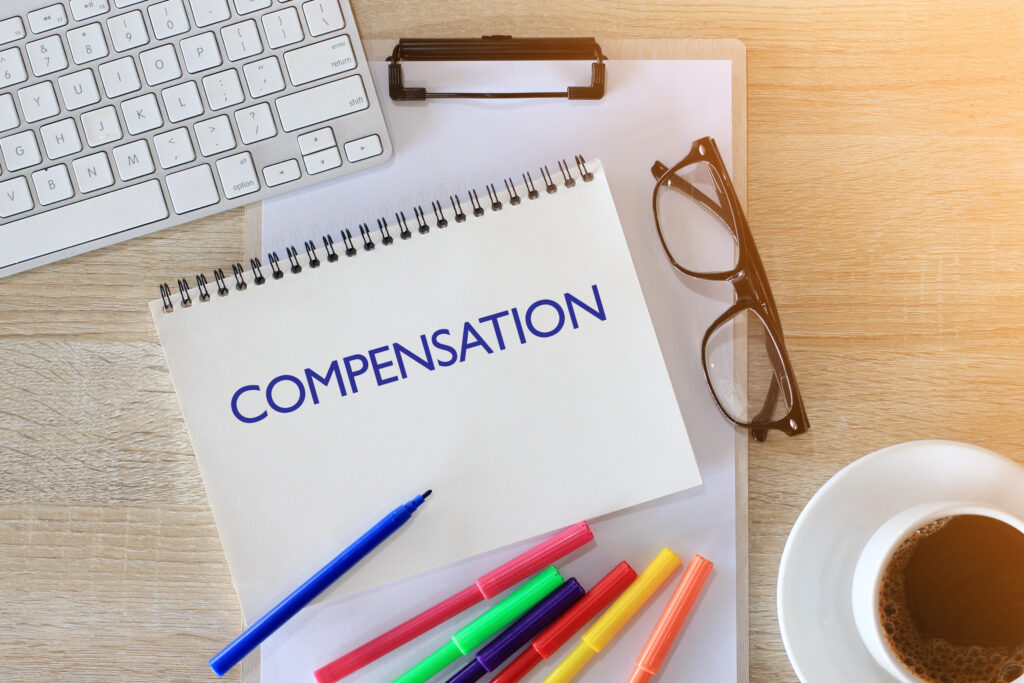You can sue another motorist if you were rear-ended at a stoplight, and a personal injury lawyer can guide you through the process. When another driver hits you from behind while you're stopped, the law strongly presumes they were negligent.
However, you may already face resistance from the at-fault driver's insurance company. What seems like a simple, open-and-shut case often becomes a frustrating battle.
Insurance adjusters minimize payouts and have specific tactics for rear-end collision claims. The good news is that Arlington car accident lawyers understand those strategies and know how to build a strong claim.
Why a Simple Rear-End Accident Gets Complicated

Even when the other driver gets a ticket and admits fault at the scene, their insurance company will probably try to pay you as little as possible. The adjuster works for the insurance company, not for you. Their job is to protect their employer’s profits by finding ways to devalue your claim.
They achieve this by questioning the two most important parts of your case: who was at fault and how badly you were hurt. They might ask leading questions or make arguments that seem absurd.
Adjusters do this to create doubt and pressure you into accepting a quick, low settlement offer before you understand the full extent of your damages.
Questioning Obvious Fault
While it's difficult for them to deny that their driver hit you, an insurer will likely try to shift a portion of the blame onto you. The adjuster may ask things like, “Were all of your brake lights working?” or “Did you stop suddenly?”
These questions are designed to get you to second-guess yourself and suggest that you contributed to the crash. Any percentage of fault they successfully place on you reduces the amount they have to pay.
An attorney uses the police report, witness statements, video footage, and traffic laws to shut these arguments down. They work to establish the other driver's 100% liability.
Downplaying Real Injuries
The most common tactic in a rear-end collision claim is for the insurer to argue your injuries are minor or unrelated to the crash. They frequently challenge claims of whiplash, neck pain, or back strain. Adjusters often call these "soft tissue injuries" to imply they’re not serious.
They know that the pain from these injuries often has a delayed onset, sometimes taking days to appear. Adjusters may use this delay to argue that some other accident must have caused your pain. This bad-faith tactic is designed to frustrate you and make you abandon your claim.
Proving Fault in a Texas Rear-End Collision
In Texas, there is a strong legal presumption that the driver who rear-ends another vehicle is at fault for the collision. This is based on the legal duty of every driver to maintain a safe following distance. A driver must always be able to stop safely if the traffic ahead of them stops for any reason.
When a driver hits you from behind while you're stopped at a red light, they have clearly violated this duty. They were either following too closely, not paying attention, or driving too fast for the conditions.
To prove your case, your attorney will gather key pieces of evidence that confirm the other driver’s negligence.
Key Evidence in a Rear-End Crash
A strong case is built on clear evidence. While the crash itself seems straightforward, your legal team will collect and organize all the proof needed to counter any arguments from the insurance company.
This includes:
- The Police Report: The official report documents the facts of the accident, often includes the officer’s opinion on fault, and may state if a citation was issued to the other driver.
- Photos and Videos: Pictures of the damage to both vehicles are powerful evidence. The location and severity of the damage on your rear bumper and their front end clearly shows the nature of the impact.
- Witness Statements: An independent witness who saw the other driver approaching too fast or looking down at their phone provides an unbiased account that is very persuasive.
- Traffic Footage/Business Surveillance: If available, footage from nearby traffic cameras or business surveillance systems can provide an objective view of the accident.
Don't Underestimate Your Injuries
The forces in a rear-end collision, even at low speeds, can cause significant harm. The sudden snapping motion of the head and neck is what causes whiplash, a serious injury that can lead to chronic pain if not treated properly.
Don’t let an insurance adjuster without a medical degree tell you that your pain isn't real.
While following your doctor’s orders helps you heal, it also creates a record of good faith. Some insurers might point to missed rehab sessions as a way to show your injuries aren’t very serious.
Go to all your physical therapy sessions, see any recommended specialists, and take your prescribed medications. Every medical visit creates a record that documents the reality of your injuries and connects them directly to the other driver's negligence.
Pain from these injuries may not peak for days after the crash, so seek medical evaluation even if you don't feel pain immediately. Getting checked out establishes a baseline for your condition and prevents the insurance company from arguing that your injuries happened later.
Potential Compensation After a Rear-End Accident at a Stoplight

After being rear-ended at a stoplight, you have the right to seek compensation for all the ways the crash has harmed you. An insurance adjuster's low offer doesn’t determine the value of your claim; it's calculated based on your actual losses.
A personal injury lawyer works to identify and prove every category of damage you have suffered. Your claim includes recovery for all your current and future financial costs and the significant physical and emotional toll of the injury.
Your attorney will fight for the maximum recovery in each of these areas:
- Medical Treatment: This covers every expense of your physical recovery, including emergency room visits, ambulance transport, doctor appointments, surgery, physical therapy, and prescription medications.
- Future Medical Needs: If your injuries require long-term care, such as future surgeries or ongoing pain management, your personal injury lawyer accounts for these costs in your claim.
- Lost Wages: You can recover the income you have already lost from being unable to work. If your injuries are severe enough to prevent you from returning to your previous job or limit your ability to earn a living, you may seek compensation for this diminished earning power.
- Pain and Suffering: This compensation covers the physical pain, discomfort, and emotional distress you have endured because of the other driver's negligence.
- Property Damage: This covers the full cost to repair your vehicle to its pre-accident condition or, if it's declared a total loss, the fair market value of your vehicle.
How a Lawyer Helps With a Rear-End Collision Claim
An experienced personal injury lawyer takes the burden off your shoulders and puts the pressure back on the insurance company. They transform your claim from a frustrating ordeal into a professional legal demand that the insurer must take seriously.
A lawyer has the resources and knowledge to fight for the compensation you need.
Proving the Full Extent of Your Injuries
Your legal team will collect and analyze all your medical records and bills. They present this information to the insurance company in a clear format that proves your injuries are real, painful, and a direct result of the crash.
Your attorney uses medical documentation to silence an adjuster's attempt to downplay your pain.
Shutting Down Blame-Shifting Tactics
An attorney knows the law and the common tricks adjusters use. They’ll use the police report, vehicle photos, and legal precedent to establish the other driver’s fault firmly.
Your lawyer makes it clear that attempts to blame you for being stopped at a red light are baseless and won’t be tolerated.
Calculating Your Damages
The initial offer from an insurer almost never accounts for all your losses. Your lawyer will calculate the full value of your claim, which includes your current medical bills and lost wages. Your personal injury lawyer also works to value your pain and mental anguish fairly.
Fighting for Compensation
Using the evidence, your legal team creates a demand package and negotiates with the insurer based on the calculation of your losses. A lawyer's most powerful tool is the ability to file a lawsuit.
If the insurer is stubborn and unreasonable, your attorney can file a lawsuit and fight for compensation in court.
FAQ for Can I Sue If I Was Rear-Ended at a Stoplight?
What Is the Average Settlement for a Rear-End Accident at a Stoplight?
There is no average settlement amount because every case is unique. The value of your claim depends entirely on your specific losses, including the total cost of your medical treatment, the amount of income you lost, the cost of vehicle repairs, and the severity of your pain and suffering.
Anyone who promises an average is not giving you a realistic picture. Your lawyer will review the facts of your case and build a realistic estimate.
Is the Driver Who Rear-Ends Another Car Always 100% at Fault in Texas?
In most cases, the rear driver is found to be 100% at fault. The law creates a strong presumption that they were negligent. Insurance companies might attempt to argue rare exceptions, like a sudden and unprovoked brake-check in moving traffic.
However, these arguments don’t apply when legally stopping at a stoplight.
Why Is the Insurance Company Offering So Little When the Crash Was Not My Fault?
Insurance companies are for-profit businesses whose goal is to collect premiums and pay out as little as possible on claims. They make low offers because it works; many people who don’t have legal representation accept them because they don't know the full value of their claim, or they don't have the energy to fight.
Can I Sue If I Was Rear-Ended at a Stoplight but My Pain Didn't Start for a Few Days?
Yes, you can absolutely file a claim if your pain was delayed. Delayed-onset pain is a medically documented symptom of whiplash and other soft tissue injuries. Seek a medical evaluation as soon as you start feeling pain.
Your medical records will then create the official link between your injuries and the date of the accident. Then, call a lawyer to discuss your legal options.
What Kind of Damages Can I Recover After Being Hit From Behind?
In Texas, you can seek recovery for two main types of damages. Economic damages cover all your financial losses, like medical bills, lost wages, and property damage. Non-economic damages compensate you for your physical pain, mental anguish, and the overall impact on your life.
How Long Do I Have To File a Claim After Being Rear-Ended at a Stoplight?
In Texas, the statute of limitations for filing a personal injury lawsuit is generally two years from the accident date. If you fail to file your lawsuit within these two years, you’ll almost certainly be barred from ever seeking compensation for your injuries.
While two years may seem like a long time, building a strong legal case takes time. It's best to speak with a lawyer well before the deadline approaches.
We Fight for You

You were following the rules when another driver’s carelessness changed your life. Now, their insurance company is trying to make you a victim all over again. You don’t have to accept their lowball offer or their unfair tactics.
At DFW Injury Lawyers, an experienced Arlington personal injury lawyer fights for people injured in rear-end accidents. We know how to hold insurance companies accountable and demand the full and fair compensation you need to heal.
Call us 24/7 at (972) 440-2320 for a free and confidential consultation, and let us turn your frustration into action.